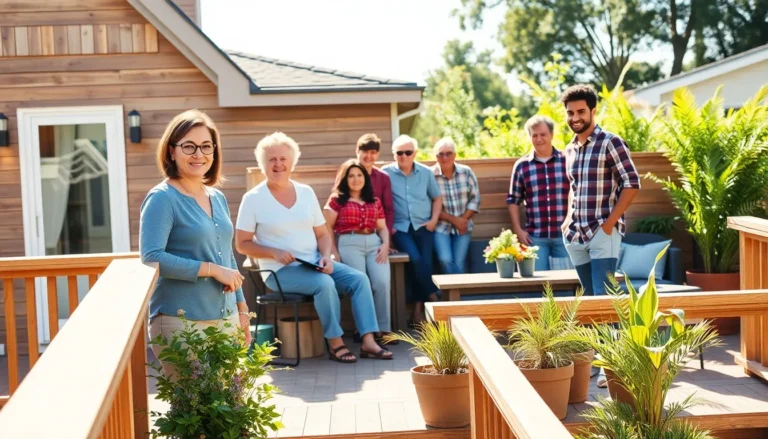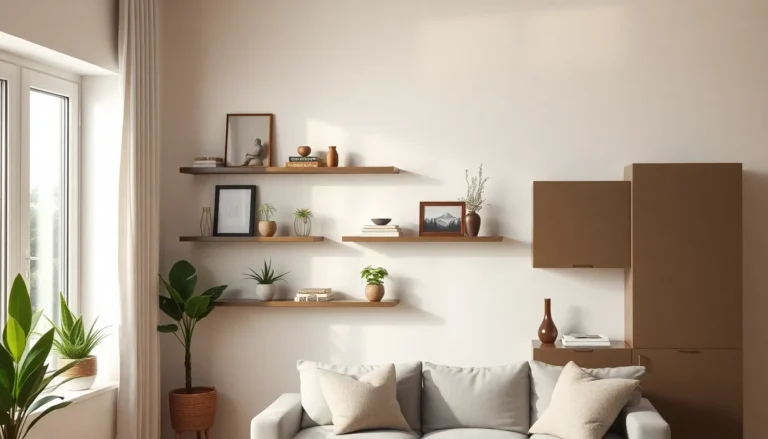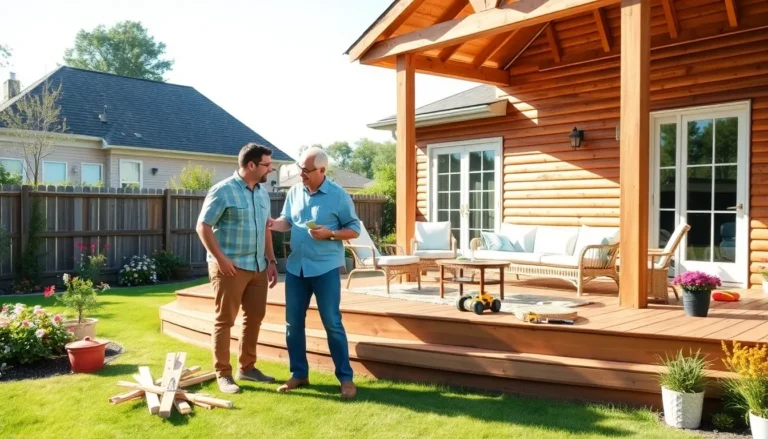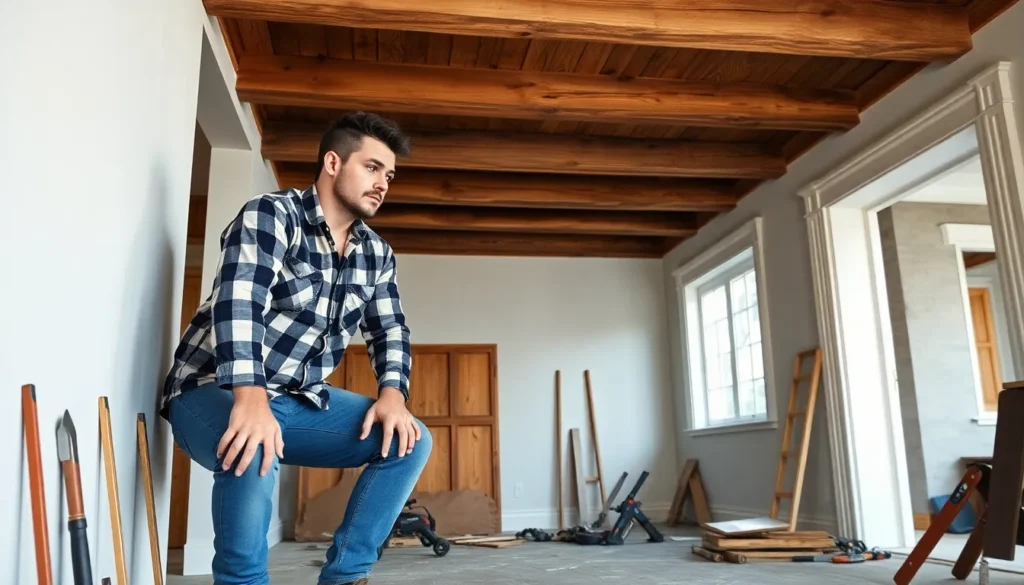Table of Contents
ToggleRenovating older homes is more than just a trend; it’s a passion for many homeowners and designers alike. These charming structures often hold a wealth of history and character that new builds simply can’t replicate. However, breathing new life into these spaces requires careful planning and a keen eye for detail.
From preserving original features to incorporating modern amenities, the process can be both rewarding and challenging. Homeowners often find themselves navigating a maze of building codes, design choices, and budget constraints. Yet, with the right approach, they can transform these vintage gems into stunning, functional living spaces that honor their past while embracing the future.
Renovating Older Homes: An Overview
Renovating older homes involves a careful blend of preserving historical charm and updating for modern living. Homeowners often find unique architectural details and materials that tell a story, offering character absent in new constructions. Prioritizing the preservation of original features maintains the home’s aesthetic and historical integrity.
Planning stands as a crucial step in the renovation process. Homeowners must assess the structure’s condition, identify necessary repairs, and develop a comprehensive budget. Budgeting for unexpected expenses remains essential, as older homes can reveal hidden issues, such as outdated wiring or plumbing.
Understanding building codes is critical when renovating. Local regulations may dictate what alterations are permissible, particularly for homes in historical districts. Compliance with these codes preserves the home’s legacy and keeps renovations legal.
Integrating modern amenities enhances comfort and convenience. Upgrading kitchens and bathrooms can make the home more functional while appealing to potential buyers. Choosing energy-efficient appliances and fixtures provides sustainability and reduces utility costs.
Homeowners often face challenges during renovations. These may include sourcing appropriate materials, maintaining timelines, and navigating unanticipated structural concerns. Engaging skilled contractors with experience in historic renovations helps ensure quality workmanship and adherence to preservation standards.
With thoughtful planning, adherence to regulations, and respect for the home’s history, renovating older homes can yield stunning transformations that honor the past while accommodating contemporary lifestyles.
Benefits of Renovating Older Homes
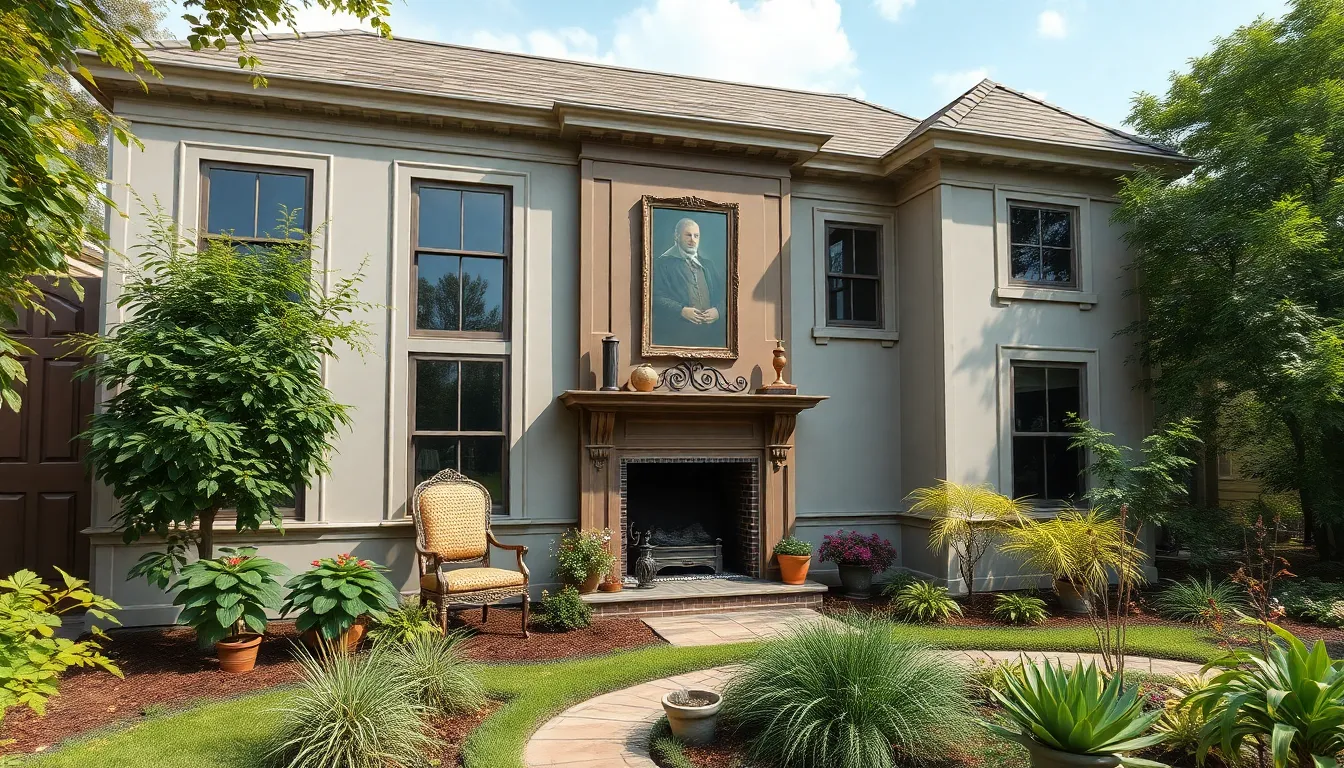
Renovating older homes presents numerous benefits ranging from preserving historical value to enhancing aesthetic appeal. Homeowners can transform vintage properties into modern living spaces while maintaining their unique charm.
Preserving Historical Value
Preserving historical value remains a primary advantage of renovating older homes. Homeowners can maintain original architectural features, such as moldings, hardwood floors, and fireplaces, reflecting the home’s heritage. Restoring these elements not only keeps history alive but also contributes to the home’s overall character. Recognizing and reinstating period-appropriate materials and designs promotes respect for the craftsmanship of the era. Additionally, complying with local preservation guidelines ensures the property maintains its historical significance, often enhancing its overall value.
Enhancing Aesthetic Appeal
Enhancing aesthetic appeal provides another key benefit associated with renovation projects. Updating older homes includes integrating modern design elements while preserving their unique charm. Homeowners often choose color palettes, fixtures, and layouts that resonate with contemporary tastes while respecting historical integrity. Lighting upgrades and open-concept designs create brighter, more inviting spaces. Landscaping improvements, including native plants and outdoor living areas, elevate curb appeal. These thoughtful renovations boost property value and attract potential buyers by creating visually stunning and functional spaces.
Common Challenges in Renovating Older Homes
Renovating older homes presents unique challenges that can complicate the process. Homeowners must navigate structural issues and outdated systems, which can significantly impact timelines and budgets.
Structural Issues
Structural issues often arise in older homes due to age, settling, or previous renovations. Homeowners frequently encounter problems such as:
- Foundation Concerns: Cracks, settling, and shifting can compromise the structural integrity.
- Roofing Complications: Old roofs may show signs of wear, leading to leaks or the need for replacement.
- Framing Problems: Aging timber or improper framing can weaken the walls and ceilings.
Addressing these issues typically requires a thorough inspection by a qualified professional. Identifying and correcting structural problems early in the renovation process minimizes future complications and maintains safety.
Outdated Systems and Materials
Older homes often feature outdated systems that hinder efficiency and safety. Common concerns include:
- Electrical Systems: Outdated wiring may not meet current codes, posing a fire hazard.
- Plumbing Issues: Old pipes, often made of materials like lead or galvanized steel, may lead to leaks or contamination.
- HVAC Systems: Inefficient heating and cooling systems can increase utility costs.
Upgrading these systems enhances the home’s functionality and aligns with modern safety standards. Homeowners should consult experienced contractors to ensure these upgrades are done correctly and comply with local regulations.
Essential Tips for Successful Renovations
Successful renovations of older homes require a strategic approach. Careful planning and accurate budgeting lay the groundwork for a smooth renovation process.
Creating a Comprehensive Plan
Creating a comprehensive plan involves several steps to ensure a successful renovation.
- Assess the Home’s Condition: Conduct a thorough inspection to identify structural issues, plumbing needs, and electrical upgrades.
- Research Historical Guidelines: Review local preservation guidelines to understand restrictions, especially for homes in historical districts.
- Set Clear Goals: Determine specific goals for the renovation, focusing on whether to preserve original features or introduce modern elements.
- Design with Professionals: Hire architects or designers skilled in historic renovations to create plans that honor the home’s character while providing modern functionality.
- Establish a Timeline: Develop a realistic timeline that outlines key milestones, taking into account potential delays due to unforeseen issues.
Budgeting for Renovations
Budgeting for renovations requires a detailed approach to accommodate various factors.
- Conduct Detailed Estimates: Obtain multiple quotes from contractors for labor and materials, ensuring a comprehensive budget.
- Plan for Contingencies: Set aside 10%-20% of the budget for unexpected costs, which often arise in older homes due to hidden issues.
- Prioritize Expenses: Categorize renovation items into essential and optional to allocate funds efficiently.
- Assess Material Costs: Research and select materials that suit both aesthetic and budgetary constraints, prioritizing period-appropriate options where applicable.
- Monitor Progress: Regularly review spending against the budget, adjusting as necessary to avoid overspending.
With a comprehensive plan and thorough budget in place, homeowners can navigate the challenges of renovating older homes successfully while preserving their unique charm.
Renovating older homes is a rewarding journey that marries history with modern living. Homeowners who embrace this challenge can create unique spaces that reflect their personal style while honoring the home’s heritage. By prioritizing careful planning and engaging skilled professionals, they can navigate obstacles and achieve stunning results.
The transformation of these vintage properties not only enhances their aesthetic appeal but also preserves their historical significance. With attention to detail and respect for original features, homeowners can breathe new life into older homes, ensuring they remain cherished for generations to come. Ultimately, the blend of past and present in these renovations creates a living space that tells a story, making it truly one-of-a-kind.

